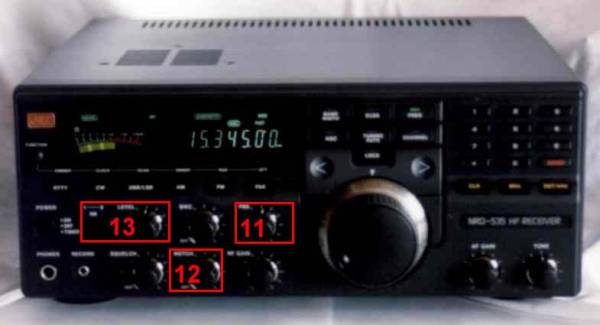Signal processing
Shortwave reception is characterised by the fact that stations often coming with a weak signal due to low transmitter power, propagation disturbances and interference from signals from stations on adjacent channels or even on the same frequency.
Modern communication receivers often allow post-processing of the signal, so with sophisticated technical tricks a barely intelligible signal can be optimised so that the content becomes intelligible. However, a very poor signal suffering from heavy interference will although never give pleasant music quality.
11: With the Passband - Tuning knob, the passband of the IF filter is shifted relatively to the signal, as if you would slide a small window so you can see the most interesting bit of a landscape. In case of an interfering signal 3 kHz above the desired stations carrier, you can move the gate of the IF filter using the passband tuning / PBT control a bit further down and the ennoying interference hiss will disappear.
12: With the notch filter, you can selectively suppress one interfering heterodyne frequency. In some receivers, the notch filter acts on the radio frequency side on the intermediate frequency, in others in the audio stage. After switching on, turn the Notch filter control very carefully until the annoying interfering beat note will disappear. In the AOR 7030, you find an automatic notch filter that will automatically detect the interfering signal and will successfully suppress it in most cases.
13: The noise limiter, Noise Blanker, eliminates very short pulse noise such as ignition noise from cars or impulses of over-the-horizont - radar systems working in the shortwave frequency range (known as „Russian Woodpecker“). It is not effective against wide band noise from portable computers power supplies or energy-saving lamps.

